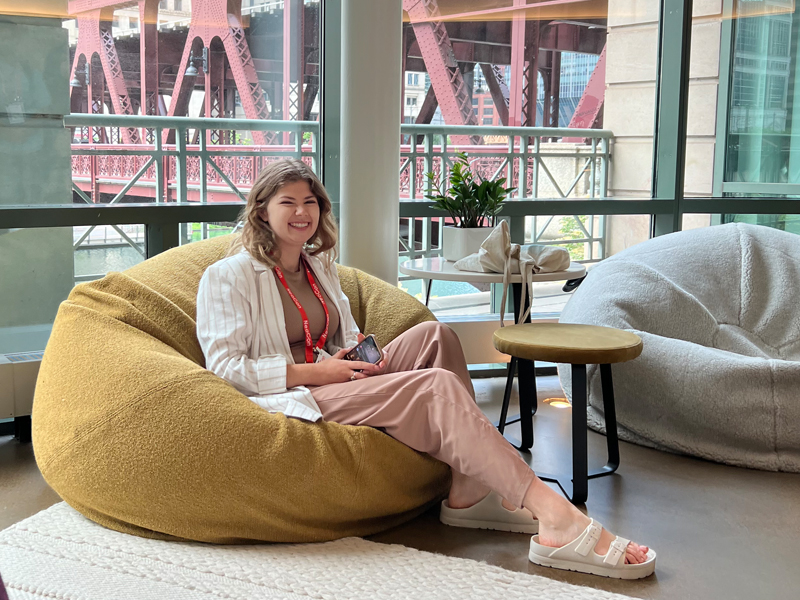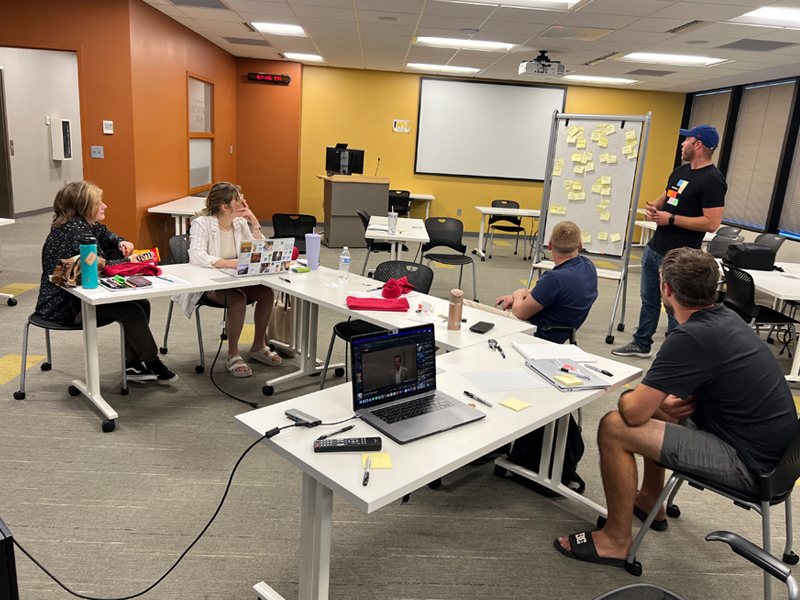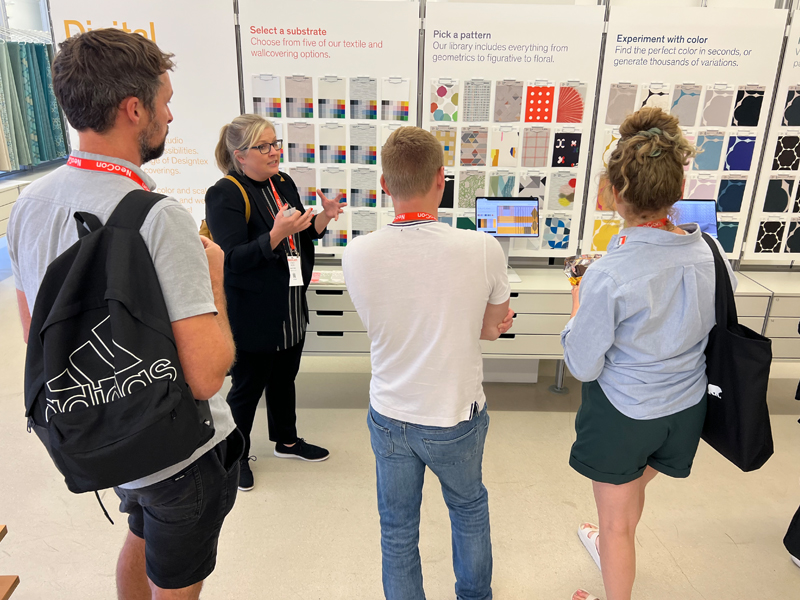Everyone offers a different level of information to teach. With a topic as diverse as Innovation Design, there are soft skills to instigate as a leader, management modules, efficiency systems, and design thinking processes that all need to be understood and relayed to a student properly, no matter their academic background.

My name is Denae Sawyer, and I am not an MID student. I’m an undergrad in the Honors
Baccalaureate program, crafting a third of my major around ID courses. Being first
exposed to the design thinking process in ID 300 by Professor Kristyn Smith, I was
shocked by the intricacies of the classroom. My regular undergrad classes have followed
a step-by-step of introductions so far, with us studying a syllabus, then suddenly
breaking into the coursework. The similarities were there in this class, though hardly,
but when Kristyn started the class with open introductions and icebreakers, it was
not just for bonding as a group: She explained the reason why we do icebreakers, why
we build bonds in a collaborative group, why we learn more about others we work with.
Already, from Day One, we were learning the reasons and techniques behind the ways
to properly collaborate, the ways to
come up with ideas while remaining unbiased, and the ways to welcome different perspectives
to create one overarching problem to solve.
From this class alone, I had wanted to dive deeper. Sure, it was in the MID college course list, but I knew I wanted to experience more, and I wanted more of the diversity known within Innovation Design. What ways could an idea be developed further? How could I work with a smaller group of people with even greater differences to come up with an idea that had real-world application? Cue ID 514.

Professors Doug Stucky and Maggie Schoonover tag-teamed and took turns teaching the
class–the first half being ideation, development, details, and the whole idea itself
solving a real-world problem we developed with Professor Stucky, and the second half
slid into defining value, costs, and creating an efficient process and model behind
the prototype itself with Professor Schoonover. My peer and I could not have been
more different on every level: She is active, analytical, tech-savvy, science-oriented,
and a master's student, and here I was with mood boards and color palettes and my
still-in-progress undergrad academic background in English and Marketing. I was pushed.
Both professors are wildly different in all the best ways, and this pushed me in not
just understanding what the whole ID college had to offer, but also in diversifying
my own thinking. Professor Stucky, with an artsy background, pushed for every idea
to be put in a visual way, for every thought to be drawn, for any word spoken in class
to have its place on a Post-It note. Professor Schoonover asked questions I could
not have thought of alone, requested answers for content I was learning about for
the first time, and I found myself asking questions I was never prompted to ask in
my typical undergrad courses. What value needs to be associated with cost? What value
needs to be attributed with this? Is it worth trying to match this product to this
target market? Why?

But after this, how did the innovation of a product reflect with the company? With
its people? With the leadership models in the company itself? I had seen glimpses
of it, but I desired to be fully immersed in an environment where I could see the
reason for certain innovations, the products that answered problems, and the traits
reflected in a company’s values. Here, we insert ID 506.
This was a class over the summer, paired with a trip to the NeoCon furniture conference
with Professor Kristyn Smith and my fellow peers. I was surrounded, once more, by
MID students, years ahead of me in academics, thinking, and life as a whole. I was
already learning from my peers and what they expected to derive from this class: Inspiration
for their own product ideas, an insight on the future of innovation, even a way to
see how marketing evolved since the pandemic. Something interesting in this class
happened for the first time that I have never been asked in my other undergrad classes:
I was asked what is piling on my plate.

My other classes push for experience, trying everything, taking new risks, and stacking
something even if you will want to drop it later… This class asked me to say no for
the first time. I was shocked, because this was a wild idea; how could I be someone
who was innovative and trying new things if I said no to so much? But it was more
than that: It was a question that made great leaders, because it questioned their
core values. What did we want to pursue most as the drive for our work? Our ideas?
Then this question came out at NeoCon: Every company had one core value they pursued,
answered, and reflected in their products. Some companies proved their lack of a carbon
footprint, others a simplistic design that would carve the future. I saw every piece
of furniture answer the question of the value of its company, as if to say yes, this
is what I reflect. This is what I am. It’s so much more than just Innovation Design.
It is a way to review the person you are, the person you want to be in the workplace,
future corporate, and it recreates the way you think. Not just with ideating posting
sticky-notes on a board to later eliminate and categorize, but in a way of testing
how well an idea will truly answer the question of what will add value. From an outsider
looking into the world of the ID college, I want to step through the door and learn
to think like they do. Truly.
Interested in taking Innovation Design Courses? View Courses Here.
Stay in touch with all things College of Innovation Design by subscribing to our newsletter here.


